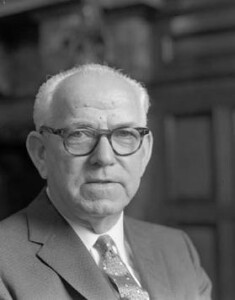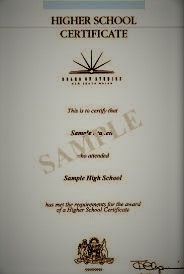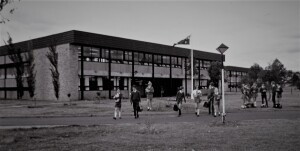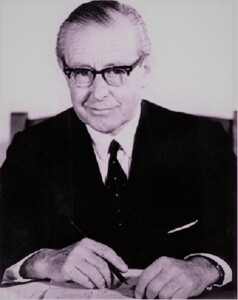The problem of how best to deliver universal secondary education to youth exercised many national systems of education through the twentieth century. Among the democracies, the United States and Scandinavian countries were pioneers of a particular approach: comprehensive secondary schooling. Pressures towards the comprehensive school increased after World War II. (Why this was so is discussed elsewhere in this Dictionary.) Following New Zealand and Western Australia, the government of the most populous state in Australia decided that comprehensive school reform might be an improvement on the pre-existing and highly differentiated school system.
The Report of the Committee Appointed to Survey Secondary Education in New South Wales, 1957 , found expression in the 1961 Education Act which inaugurated a complete overhaul of secondary education in New South Wales. Both the report and the scheme which followed are named after the committee chairman, Harold S. Wyndham, who as Director-General of Education from 1952 to 1968 supervised its implementation.
.
Recommendations of the Wyndham Report
For Wyndham the Committee’s final recommendations had three essential features: abandon pre-selection of students for secondary school, introduce four years of junior secondary schooling with a core curriculum, and cultivate talent through elective subjects. The Report envisaged lengthening secondary schooling by one year, from a possible five, to six years. The recommendations can be summarised as follows:
- 1. On completion of the primary school course all pupils (usually about twelve years of age) should proceed, without a predetermining test, to a secondary school.
- 2. The first year of the secondary school should be devoted to a curriculum which all should follow, but pupils should be brought together in class-groups on the basis of general mental ability.
- 3. The purpose of this first year was threefold:
- a. trial and observation, serving as a basis for the selection of future subjects for study
b. orientation of pupils to the life of the secondary school, and
c. revision and consolidation of skills taught in the primary school.
- a. trial and observation, serving as a basis for the selection of future subjects for study
- 4. At the end of the first year, pupils (with their parents) might, under the guidance of the school principal, elect to commence the study of up to two subjects apart from those studied by all students. The scope of the subject syllabuses and the standard of work was to be based on the fact that the pupils choosing such subjects constituted a select group, apparently able and ready to follow the chosen course of study.
- 5. The curriculum for the first four years of secondary education should provide for all 12-16 year-olds.
- 6. The curriculum was to include core and elective subjects, with the core subjects diminishing in number over the first four years.
- 7. A School Certificate should be awarded, on the basis of external examinations at the end of the first four years (then, forms 1-4, today years 7-10).
- 8. A Higher School Certificate was to be awarded, on the basis of external examination, after a further two years (forms 5-6, today years 11-12), and this should be accepted as ‘matriculation’, enabling university entrance.
- 9. Two boards, a Secondary Schools Board and a Board of Senior School Studies should replace the existing Board of Secondary School Studies.
Historical pressure towards reform
The pressure for reform had been growing for many decades. The recommendations of the Wyndham Committee were partly anticipated by the Wallace Committee in 1933 and foreshadowed even more closely by recommendations of the Board of Secondary School Studies in 1946. The Wyndham Committee served a political purpose: to build an influential but broadly-based body of opinion in support of the proposed changes (Duffield, 1990).
Wyndham was appointed Director General of Education at a time when economic conditions favoured the reforms which had eluded his predecessors. From 1948 to 1965 the Australian population increased by nearly 45 per cent while gross national product grew by more than 80 per cent and the unemployment rate seldom rose above two per cent. The 1950s marked the beginning of a manufacturing boom in Australia which would multiply national wealth over the next several decades. Much unskilled work once undertaken by teenagers was increasingly performed by machines. Employers in the changing economy usually preferred older and more educated workers. A burgeoning school population in new suburbs, a result of the post-war baby boom, was a further key incentive for the Wyndham reforms to advocate local schools that could accommodate all youth living nearby. Considerable savings could be made if only one school was needed to serve all the families in a locality.
Replacing Peter Board’s tripartite system
In 1911, the then Director of Education, Peter Board, had promoted the addition of three kinds of secondary schools to the existing academic high schools. They included junior technical, domestic science and commercial schools. Together they were expected to cater for the great majority of the secondary school population. Pupils would pass from the primary school, either to a full five-year academic secondary (high) school offering languages or, in most cases, to a school in which languages were replaced, for boys, by manual arts and descriptive geometry, and for girls, domestic arts and clerical subjects. With some exceptions, these latter schools offered only a three-year program. Those pupils who wished to go further might transfer to the senior years of an academic high school, at about age fifteen, following success in the publicly examined Intermediate Certificate.

One of the academically selective high schools that survived the Wyndham Scheme. Fort Street, 1921. Photo: R.P. Moore.
Selecting students for a secondary school
The process by which students were selected for the different types of secondary school was often flawed. At about the age of twelve, students in public schools were allocated to secondary schools, or to ‘streams’ within secondary schools, on the basis, at first, of a formal examination in English and arithmetic, but later, on the basis of intelligence test results, school record and teachers’ assessments.
Between 1936 and 1950, as a result of the demonstrated unreliability of forecasts in numerous cases, eight changes were made to the selection process. Nevertheless, schools continued to make little provision for different ability groups, nor did they share a core curriculum. Once a student was enrolled in a school, a fixed pattern of subjects was imposed, with little variation in the level of difficulty and with small opportunity to transfer to another kind of secondary school. Schools and courses were often differentiated on the basis of the number of languages students studied (the pupils deemed the most able being placed in a ‘two-language course’), the least able in a ‘non-language’ course.
Consequences of the selection process
Apart from the fact that subjects such as home science and manual arts were considered low status and often denigrated, this streaming had at least two serious consequences. In each stream, the work in all subjects tended to be pitched at the expected level of ability of the stream, irrespective of the variations in interest and aptitude between individual pupils and, it was difficult to change streams, save at the cost of repeating a year.
Meanwhile, the status of academically selective high schools and the two-language stream was enhanced by the fact that moderate success in them left open the road to the Leaving Certificate and ‘matriculation’. Quite apart from the individual cases of disaster which guidance workers frequently identified, the consequence of this situation, using the language of the day, was a high degree of pupil ‘wastage’. These problems manifested themselves at the conclusion of the junior secondary school years. As Wyndham observed: ‘pupils did not merely “drop out”, they were pushed out, in many cases, by lack of relevance in the curriculum and by the inevitability of failure’.

Robert Heffron., 1960. As Labor Minister of Education he commissioned the Wyndham Report
Architecture of the Wyndham Scheme
Under the Wyndham Scheme, having completed the primary school course at about the age of twelve years, all pupils were to proceed, without examination, to secondary education. Pupils of low ability would no longer remain in the primary school beyond the age of thirteen and a half. This new education pattern provided for six years of secondary schooling, the junior years to be comprehensive in character. There was a core curriculum, with provision for different levels of study and some subject choice for most students. However, the scheme avoided, initially at least, any direct attack on academically selective high schools, probably recognising their popularity for many families, and the influence of their former pupils.
Abolishing entry tests
The first year of secondary school was the major focus of the reforms. Since courses were to be progressively determined within secondary schools, first form was expected to provide a period of trial and observation as a basis for selection for the later study of individual subjects. Although this first year of secondary school was devoted to a curriculum which all would follow, class grouping was still to be based on ‘general mental ability’. A general education for all adolescents, but ‘including opportunities for the talented’, was the predominant purpose of the first four years of secondary education.
Finding the best courses for students
Selection was to occur within the one school rather than between different schools. Selection was to be ‘progressive, not catastrophic’ in nature. At the time the Report was released, apart from ten schools for which selection was based largely on their specialist courses (for example, agriculture), only fourteen high schools were selective on the basis of pupils’ supposed academic ability. The fourteen academically selective high schools were concentrated in metropolitan areas and thus ‘not representative of the whole public secondary school system’.
Selection on the basis of the sex of the student was also to be avoided, since wastage of talent was even higher for girls. Coeducation was desirable. Wyndham believed that the responsibility of sex difference for special abilities and interests had ‘in the past, often been exaggerated’.
The initial common curriculum and the School Certificate
The first four-year segment was designed to provide a core of subjects common to all schools, together with a progressive increase in the proportion of elected subjects. The greater part of the curriculum for first year was to be allotted to the common core which should include the subject fields of English, social studies, science, mathematics, music, art, crafts, physical and health education, and religious education. After the initial year, under teacher guidance, election of subjects was to be made progressively in the light of pupil achievement or potential. It was expected that time devoted to these elective subjects would increase to some 40 per cent of total school time by fourth form. On satisfactory completion of the four year course a School Certificate was to be issued on the basis of the results of an external examination. This assessment was intended to indicate the successful completion of a course of secondary education. English was given a special place in the Committee’s proposals. It became the major continuous strand in the secondary school educational pattern, and the work for different classes would be reshaped, in scope and method of treatment, on the basis of ability grouping.
Promoting ability grouping through elective subjects
The curriculum for the least academically able pupils was to consist almost entirely of the ‘core’ of subjects, studied at their appropriate level of ability. On the other hand, the most gifted pupils, would be encouraged to make the greatest possible use of electives, but would not be allowed to do so at the expense of a balanced curriculum. If, for example, a student ultimately studied three languages, he or she would also have studied both mathematics and science, as ‘a preparation for citizenship’, over a period of four years. If students’ electives were mathematics and science, they would also have followed a four-year course in the social studies, music and art.

The credential as certificate. The Higher School Certificate.
Senior years to have academic and matriculation focus
The Committee believed (with the statutory school leaving age still 15 years of age) that the main exit point from the secondary school would likely occur at the end of the fourth form, and this belief was confirmed in practice.
Most students then, were expected to leave after achieving the School Certificate (SC). Pupils wishing to proceed beyond the School Certificate could remain at school to follow courses leading to the externally examined Higher School Certificate (HSC) examination, a credential enabling university entrance, ‘matriculation’. The content of these senior school studies continued and expanded the elective courses, but included English. The Report saw this latter stage of schooling as meeting the needs of ‘the most able adolescents between the ages of sixteen and eighteen’. Wyndham insisted that the fifth and sixth form were intended to be unashamedly elitist: ‘at one with the European tradition of cultivating elite and talent’. Despite hopes that the final two years would provide a broad liberal education, they came to be seen primarily as a preparation for university entrance. It was thought that no more than 20 to 25 per cent of pupils would continue full-time day schooling beyond the School Certificate. For most, the two years of further study should lead to the Higher School Certificate examination.
This HSC examination, and the syllabus of work in preparation for it, were to be the responsibility of a new Board of Senior School Studies. It was anticipated that most of the candidates for the HSC would be over 17 years of age. The Wyndham Committee appreciated the problems that many students faced in making the transition to the university study. It would help that students would be more mature, a year older than before the implementation of the Wyndham Scheme. Also the atmosphere and method of the senior school years were planned to foster individual study and personal initiative, in the manner of the much admired ‘sixth form’ as it appeared in English grammar schools. This was also expected to foster a more satisfactory transition to university study.
Implementing the Wyndham Scheme
The Scheme’s requirement of a common core curriculum and an extra year would impose costs additional to those attendant on increasing enrolments arising from the post-war baby boom and new immigration. The Report also envisaged a substantial increase in the enrolments of pupils for the fourth and sixth forms. Additional requirements for specialised scientific equipment, classrooms, schools and teachers all imposed an additional financial burden on government and other school providers.
Teachers and teacher education
By the mid-1950s the Education Department was faced with a critical shortage of teachers, even before the Wyndham Scheme was introduced. Under the new system the number of subjects and subject classes would be reduced in the junior secondary curriculum as the mandated common subjects were introduced, but there would be an additional year of school. The Report recommended that in the first form of secondary school the same teacher should teach more than one subject to the same class, thus retaining a degree of continuity with primary school arrangements. Such reforms required reformed teacher training. During the ‘waiting phase’ provision for further staff was made by increasing the number of teachers college scholarships from 282 in 1955 to 525 in 1960, and by 1964 some 1,348 were taken up.
These pressures were especially felt by Catholic schools since their costs were rising substantially as the proportion of unpaid religious teachers fell, and the necessity of employing paid lay teachers rose.
Introduction delayed
The threatening additional costs encouraged those groups who wished to postpone the introduction of the Wyndham scheme. Foremost were members of the Catholic Church, including members of parliament, influential in the New South Wales Labor Party. In the 1950s their influence was magnified by the Labor split of 1954-56. In Victoria the Catholic group had left the party and formed the Democratic Labor Party. In New South Wales there was a determined effort to avoid a similar split, but that meant concessions to Catholic interests.
Buttressed by their majority in the education subcommittee of the Labor caucus, Catholic opposition became the major impediment to a rapid implementation of the Wyndham Scheme. The Minster for Education was R. J. Heffron. Although he supported secondary education reform, he was loath to alienate this group which argued that privation would be visited on poorer parents when they were obliged to keep their children at school for a further year. Since the minimum leaving age was to remain at fifteen, Catholic members believed that the new School Certificate would diminish opportunity for working class Catholic children to gain qualifications. The Scheme would impose additional costs on a Catholic school system already financially straitened. They argued that not only the additional year but the requirement of the common core curriculum to include science, art, music and craft, could precipitate financial ruin for the church school system (Duffield, 1990).
The legislation presented to parliament by the new Minster for Education, Wetherell, on 9 November 1961 endeavoured to allay criticisms from the Catholic group within the Labor Party by retaining the Intermediate Certificate and the fears of supporters of academically selective public high schools by preserving several of these schools.
Many selective high schools thus managed to retain their traditional status. The Minister for Education in his second reading speech for the Education Bill of 1961 justified the anomaly of maintaining some selective schools since their location made it ‘well nigh impossible to constitute them as local area secondary schools’, and because they were ‘schools with a long-established history which no sensible person would wish to ignore’.
From 1962 most older high schools in Sydney became more comprehensive. Gradually junior high schools were either closed, and their pupils transferred to a neighbouring school, or the junior high school was upgraded and established as a six-year high school, sometimes with new buildings. The same procedure was followed with junior technical and home science schools. Many high schools which previously had not provided for general activities pupils now instituted classes for them. All new high schools built in the outer suburbs of Sydney in the 1960s and 1970s were comprehensive, co-educational six-year schools.

Typical, purpose built comprehensive high school in suburban Sydney. Miller High School 1965. Source: NSW Department of Education. Division of Services, Eighty to eighty, 1979
Comprehensive plans compromised?
Detractors have argued that the Wyndham Scheme betrayed comprehensive principles, insofar as it endorsed ability grouping while doing little to promote mixed grouping, and that by retaining some selective schools it preserved selection for secondary education. They asserted that the reforms simply served the interests of the middle class by entrenching an academic curriculum and an ‘elitist’ final two years (Connell et al., 1982). Supporters insisted that by introducing a common core curriculum of general education for junior students who were drawn from the local neighbourhood without selection and by creating a greater mix of children from different backgrounds and different levels of intellectual ability, the Wyndham scheme represented a momentous shift towards comprehensive ideals.
Its supporters ascribed the Scheme’s shortcomings to the necessity of meeting political exigencies. They believed the Wyndham Report was ‘mutilated’ before it was introduced as the Wyndham Scheme. The Committee’s calls for the removal of the Intermediate were thwarted by politicians who saw the Intermediate as the “poor man’s Leaving Certificate”, insisting on its retention. The Scheme as introduced, it is claimed, was an ‘emasculated version’ of the original report.
Even in his own view, Wyndham thought the reforms were far from complete. He had preserved ability grouping in a form more appropriate to the day and age and better able to serve social democratic purposes. His hopes that the Scheme would end selection for secondary schooling and protect secondary education from university control were not fully realised. The universities continued to dictate the terms of matriculation which undermined the likelihood of senior students enjoying a broad liberal education.
Despite Wyndham’s public denials, the Scheme ran counter to comprehensive principles insofar as it endorsed ability grouping and did little to promote mixed grouping (where students of high, medium and low ability attended the same classes). Distinctions between the provision of a liberal academic curriculum for an elite who would progress to matriculation and an emphasis on vocational education for the majority remained. The retention of academically selective schools undermined comprehensive principles and, in the longer term, preserved a base from which later attacks could be launched against the broader comprehensive system. Nevertheless, when viewed against the highly differentiated system it replaced, and by introducing a common core curriculum of general education for junior students drawn from the local neighbourhood without selection, the Wyndham Scheme represented a significant shift towards comprehensive education.
Note:
This entry is based on: Hughes, J. 2002. Harold Wyndham and Educational Reform in Australia 1925 – 1968. Education, Research and Perspectives, 29: 1.

